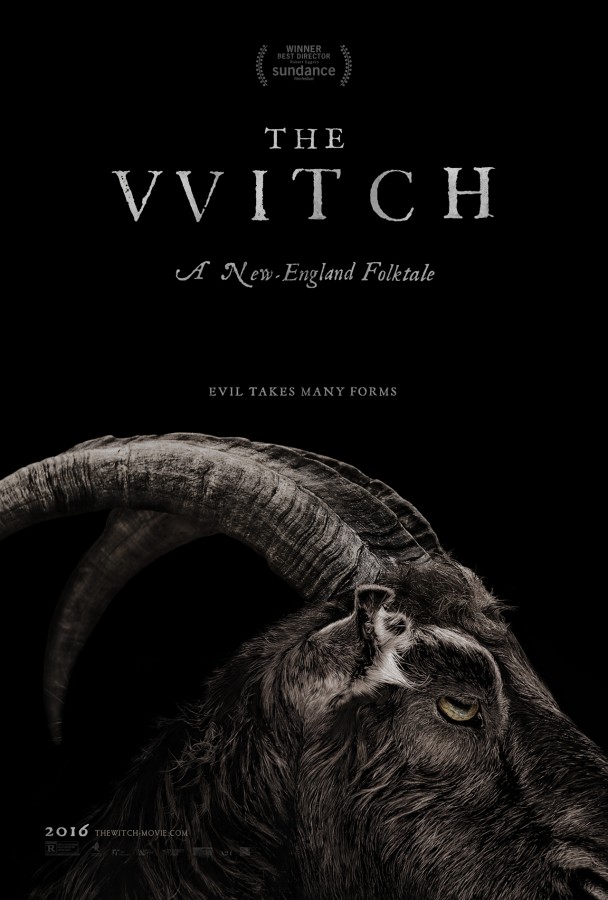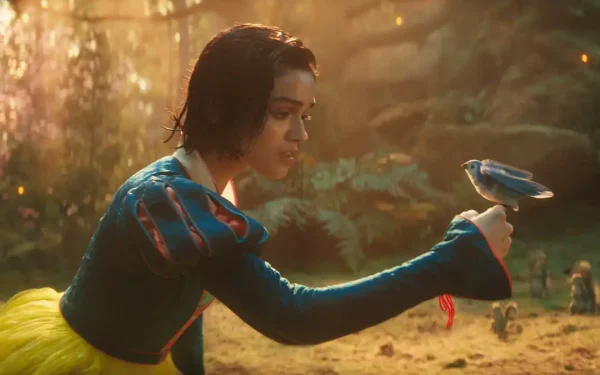The Witch conjures thrilling horror
Amidst an influx of highly anticipated films this year, an unexpected horror gem from 2015’s Sundance Film Festival may shine brighter than its competitors. The Witch, written and directed by former costume designer Robert Eggers, earned him “Best Director” at the Fest and soon found an audience throughout the U.S. through clever marketing ads with the Satanic Temple of New York and various museums and hotels near Salem.
The story is set in 1630, New England, when a family is exiled from their Puritan community and soon settles near a forest that conceals a danger to both the family’s lives and their faith. What follows is a tale of religious paranoia and social alienation both of which converge to form a gripping plot that benefits from bleak, foreboding cinematography and an enthralling setting. While the thick, almost Shakespearean accents and slow pace may be a turnoff to the average movie-goer, horror fans will be delighted to know that the film manages to terrify regardless. Rather than relying on the almost sadistic love of gore Hollywood horror flicks are known for, the film uses the sort of unsettling horror that drives films like 2014’s “The Babadook” and creeps the audience out as often as it does shocks them.
Since Eggers began his career as a costume designer, it should go without saying that the attire perfectly depicts the lifestyle of a daily settler in 1630’s North America. The hostility of the land is fully realized due to the cinematography of longtime Eggers collaborator Jarin Blaschke, and, in the case of the nearby forest, accentuated to depict the harsh reality of survival. Lingering shots of the forest are made more eerie by the usage of a wider aspect ratio that allow it to fit entire trees in single shots – all of which are made more menacing from the imposing nature of the trees. The unnerving atmosphere is accompanied by an equally haunting soundtrack consisting of almost primal chants both parts Kubrickian and Satanic.
Instead of maintaining ambiguity over the existence of the titular witch, Eggers makes her existence apparent from the start what is left up to the audience to decide is who is truly responsible for the fate bestowed upon the characters. Never once does he make the audience question whether or not a malicious witch kidnapped the infant son: a horrific sequence showing the aftermath provides all the proof one needs. Plenty more terrifying excursions into the woods and even at their makeshift home quickly follow. Gore is used sparingly, but viewer be warned: segments involving a crow and even a bunny are not going to sit well with squeamish viewers.
By the third act, the film transcends the horror movie label and becomes something of a dramatic examination of family, faith and how strong the bonds between the two are. The family, which reacts to the child’s vanishing with sorrow, resorts to drastic measures to keep themselves together as they endure more and more heartbreak. The characters take actions ranging from consulting a goat (ominously named Black Philip) and the classic scapegoating so heavily associated with this time era.
As for the character development, eldest daughter Thomasin is something of an outlier, and finds herself burdened with almost all of the family’s paranoia. This makes her the central character in the film, resulting in her embodying feminine injustice and the historical victims of fanaticism. The father has redeeming moments, but just as with each other member of the family, he refused to repent for some immoral action that he will either overcome or succumb to over the course of the film. As a heavily religious family, the cast constantly prays and seeks forgiveness in religion - it is up to the audience to decide if that devotion to religion over action, moral hypocrisy or even refusal to follow the norm is the reason they have been targeted by the nearby witch (or possibly witches).
After James Wan’s “The Conjuring” released in 2013, each consecutive year has seen a new, increasingly terrific entry in the horror genre: first Jennifer Kent’s directorial debut “The Babadook,” then David Mitchell’s breakout hit “It Follows,” and now, continuing that trend, Eggers’ “The Witch.” With each of its elements seamlessly combining to form a thrilling period piece, it can easily consider the previous years’ horror hits as equals in every regard.
Your donation will support the student journalists of Hagerty High School. Your contribution helps us publish six issues of the BluePrint and cover our annual website hosting costs. Thank you so much!







